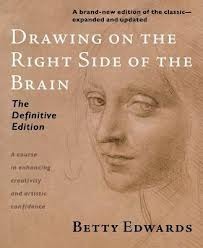More on this book
Community
Kindle Notes & Highlights
Started reading
July 9, 2020
Alan Kay, famed for his innovative computer science contributions, has stated that the concept of negative spaces is essential to computer programming—an elegant example of “far transfer.” To promote understanding, we could teach our children perceptual skills through drawing in elementary school, starting around the fourth or fifth grade—not with the intention of training future artists, but with the intention of teaching students how to transfer perceptual skills learned through drawing to general thinking skills and problem-solving skills. After all, we do not teach children to read and
...more
“That in all of these sudden illuminations my ideas took shape in a primarily visual-spatial form without, so far as I can introspect, any verbal intervention, is in accordance with what has always been my preferred mode of thinking . . .” —Roger N. Shepard, Visual Learning, Thinking, and Communication, 1978
What the pre-instructions drawings represent is the age at which the person last drew,
Rembrandt drew this tiny landscape with a rapid calligraphic line. Through it, we sense Rembrandt’s visual and emotional response to the deeply silent winter scene. We see, therefore, not only the landscape; we see through the landscape to Rembrandt himself.
As Fats Waller once said, “If you gotta ask what jazz is, you ain’t never gonna know.”
And were you aware of feeling alert but relaxed—confident, interested, absorbed in the drawing and clear in your mind?
It’s not exactly happiness; it’s more like bliss.
This yearning to quiet the L-mode may partially explain centuries-old practices such as meditation and self-induced altered states of consciousness achieved through fasting, chanting, drugs, or alcohol.
you will call on your skills of seeing edges, where lights change into shadows, seeing shapes of lights and shadows as positive and negative shapes, and seeing the angles and proportions of lights and shadows. In this lesson, all of the basic skills work together as a whole, or “global,” skill.
Learning this “trick of the artist” involves imaging: as you are drawing, you will occasionally squint your eyes to see if you can yet “see” the form you intend. And when you “see” it—that is, when the clues are sufficient to trigger the envisioned image—stop! So many times in workshops, watching a student draw lights and shadows, I find myself urgently saying, “Stop! It’s there. You’ve got it!”


